With the help of some awesome people over the past year, I made a Dr. Doom fan film entitled Von Doom. You can watch it below. Pretty cool, right?
The goal of this blog post is take you behind the scenes: what I learned, how I did it, what I’d do differently, and—drumroll—how much it cost me. Basically, it’s a deep dive into what it takes to make a small superhero film on a limited budget.
I’m a big fan of transparency, and, well, for some dumb reason, most indie filmmakers aren’t very transparent about their process. It can all feel pretty nebulous, especially for those only privy to the end product. This is especially true when it comes to budgetary considerations.
One of my biggest pet peeves is when directors brag about how little they made their movie for. Indie filmmakers wear their low-budget price tags like some sort of badge of honor, as if it matters if your film was really “no budget.”
“I made this film for $6 dollars and my iPhone!” they’ll clamor. Granted, it’s a fun narrative—a sort of “up yours” to Hollywood’s CGI crap fests with ballooning budgets. But, it also doesn’t really mean anything. More to the point, it’s a somewhat false narrative, as people trade favors, get their friends to work for free, etc. And, so, that super cheap price tag is often a fallacy.
And, real quick, before you call me a low budget indie film hater, I also take umbrage at the opposite mentality—filmmakers who raise tons of money and spend an astronomical amount of funds on a short. The short film medium is one that is notoriously underseen and provides little to no monetary compensation. So, whenever I see a $50K short film, I get similarly annoyed and want to ask the following questions:
A.) Where did that money come from? Friends/family/Kickstarter often comprise that answer.
B.) Was it really worth it? Why spend so much on (excuse my French) a f-cking short?
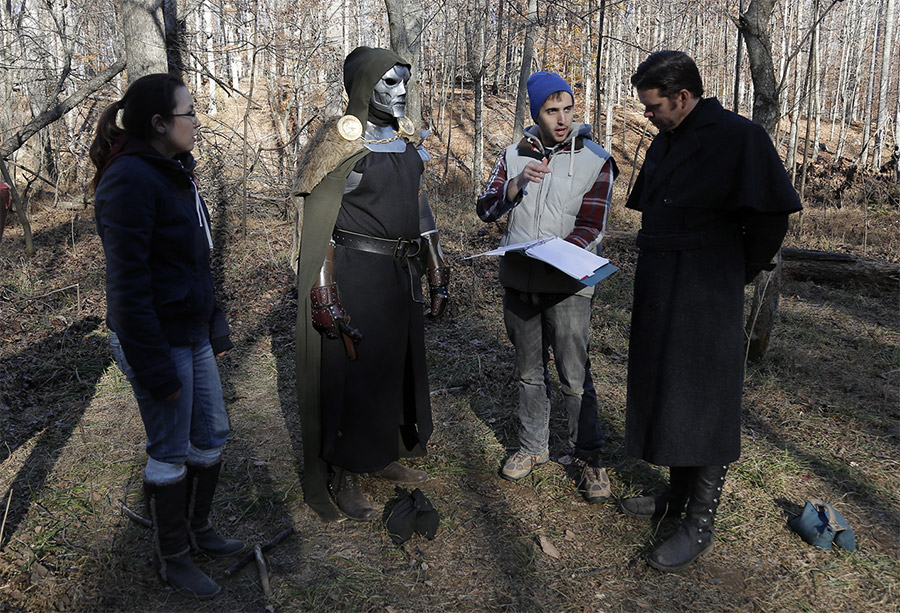
Me pretending to know what I’m doing. Photo credit CJ Reaves.
So, what’s the magic number? Obviously, it depends on the project itself. That being said, as a good rule of thumb, I think $5K – $10K is what you should roughly spend on a short (all of this is, of course, assuming you have a network of friends/crew that is eager and willing to help you out for reduced costs). You start approaching upwards of $15K and the cost doesn’t necessarily justify the reward. And, raising the funds just to make the film becomes harder than actually, you know, making the film.
Enough rambling, though. How much did I spend on the Dr. Doom project?
Total Budget: $11,292.83
In setting out to make this project, I was hoping to do it for around $10K. As you can see, I went over that. But, I’ll do my best to explain how and why certain things ending up being more expensive than I originally estimated. Real quick, though, some basic logistics:
We shot for four days in November 2016. Crew size varied each day, but on our most complex days (i.e. the forest locations), we had around 30 people on set.
For those into gear/camera stuff, we shot with two Sony FS7’s and a set of Zeiss primes. Footage was shot at 4K sLog, but final delivery was just HD.
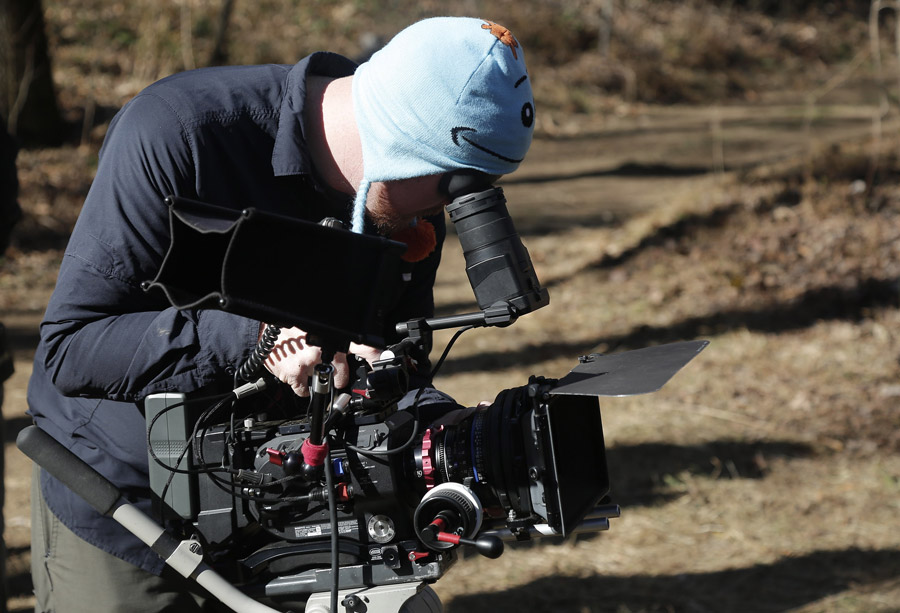
Cinematographer Joe Tyler playing with his FS7. Photo credit CJ Reaves.
Okay…on to a budget breakdown…
Locations: $365.76
We lucked out with the main location—we shot on a family friend’s property out in Northern Virginia where I grew up (huge thanks to the Walker family for this). So, the central location was entirely free. Fortunately, it looked relatively remote but was still close enough to actual buildings and electricity, so we weren’t totally in the middle of nowhere.
We were lucky for Victor Von Doom’s “college lab” as well. Producer and assistant director, Chelsie Lloyd (who also appears in the film as the dying Baroness…seriously, she does it all), hooked us up with the use of a classroom at the school she works for. So, yeah, that was free too.
The only locations we paid for were the “Baroness’s bedroom” and “Werner’s house.” Both are historical homes located in lovely Havre De Grace, MD just north of Baltimore. The bedroom is from a bed and breakfast and we just paid a single room rate. The host was incredibly accommodating and basically gave us the run of the place for the 5 hours or so we were there. “Werner’s house” is an old home that has been converted to a museum. The proprietor let us use it for a very nominal $200.00 fee (they’re closed in November for the season, so he opened it especially for us). A big thanks to the museum’s executive director, Tyler Buck, for making it happen.
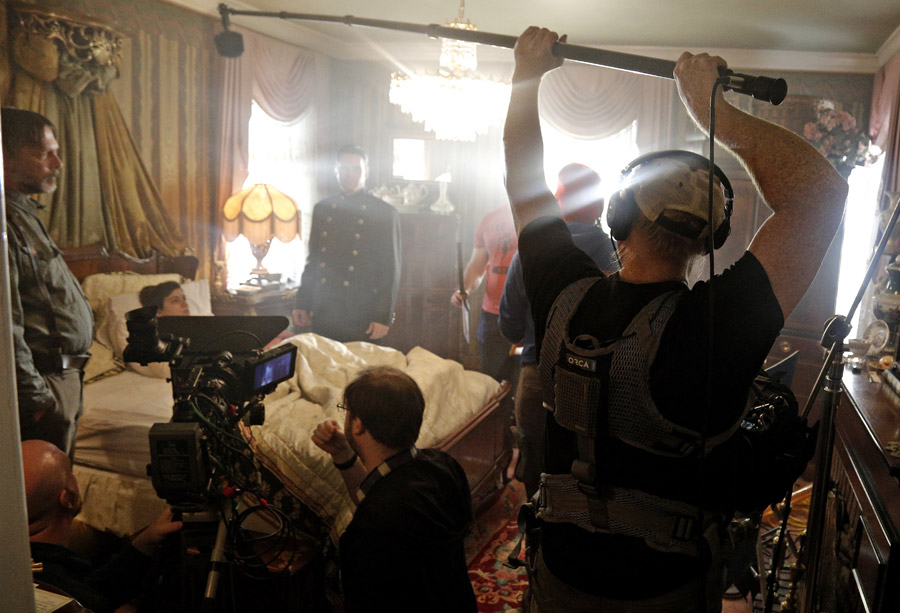
Shooting at the La Cle D’or Guesthouse. Photo credit CJ Reaves.
Costumes and Production Design: $2,161.54
Okay…this is one category I miscalculated pretty severely in my initial budget estimates. Although the costumes aren’t elaborate, I did need to source boots, coats, and clothing that didn’t look like total garbage on camera—this ended up being more expensive than I anticipated.
Most stuff came from eBay or Etsy. Some pieces were borrowed (I have a friend who is a Civil War reenactor). John Paul Andrews (who plays the Baron) provided his own costume, which was really helpful.
The Doom costume was a team effort. The mask was built by artist, Blake Night. My wife sewed Doom’s robes and cloak from a fabric store pattern. And, David Van Tassell and Sarah Stalcup helped contribute to the remaining costume pieces. Finally, I borrowed some of the additional armor elements from a friend of a friend who LARP’s in his free time. Thank god for fellow nerds on Facebook, amirite?
My production designer built the time machine, orb, and acquired a lot of miscellaneous elements. He essentially worked for free. I just provided him a bit of funds so he could acquire the materials to build the time machine itself and collect props. He kept the paltry remainder.
My big takeaway is that I need to anticipate spending more on production design and costumes in the future. Too often young filmmakers focus on cameras and equipment, but production design really shows on screen (especially when your film is most likely being viewed in a tiny box on an internet browser anyway). Production design is the thing that will truly make a film feel cinematic.
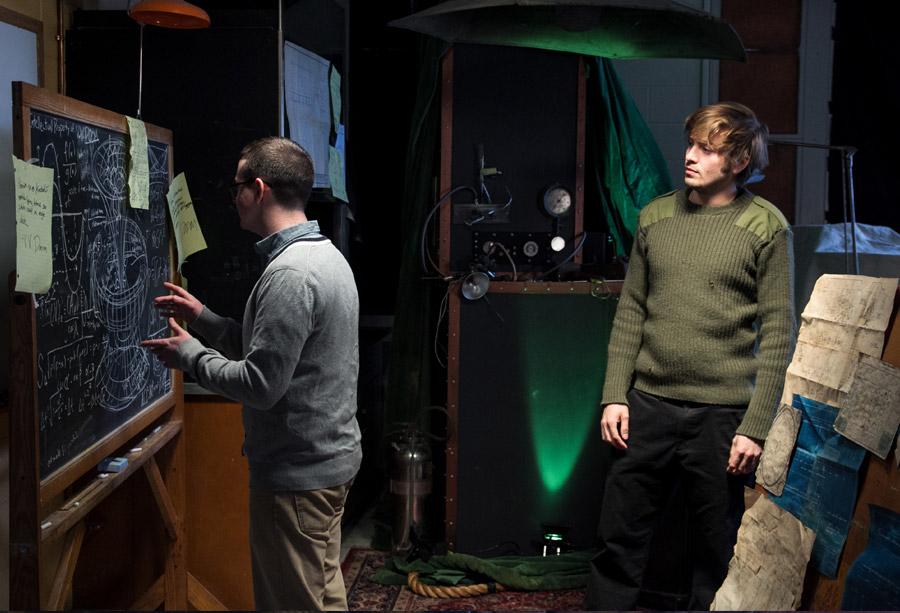
The magic of production design! Photo credit Francis Abbey.
Crew: $1,000.00
To be clear, I am more fortunate than many when it comes to finding crew to work on films. I work in video production as a freelancer, so I have a lot of connections and contacts that put me at a true advantage. Essentially, everyone worked for free (or at a significantly reduced rate). For that, I’m eternally grateful. I love you all. Here is a photo of us below. Special thanks to producer/filmmaker, Nicholas Payne Santos, for driving down from Brooklyn and helping out on set. He was invaluable asset prior to the shoot as well, helping with annoying prep work like creating call sheets.
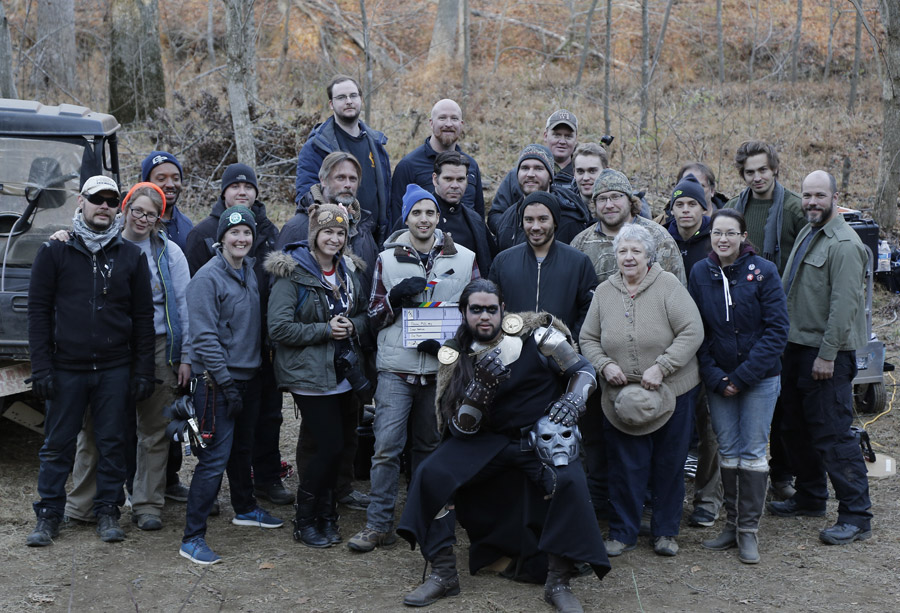
The cast and crew at the end of Day 3. Photo credit CJ Reaves.
Actors: $1,409.00
This wasn’t a union production. That being said, I paid each of the primary actors a nominal fee of $100 per day. This was my way of saying: “I can’t afford to pay you a real salary, but here’s a tiny bit of money so I don’t feel like such an asshole when I’m telling you to fall down over and over.”
Doom was voiced by Australian actor, Colin Cassidy. I paid him his full rate for a single recording session. It was all conducted via Skype. The magic of the internet!
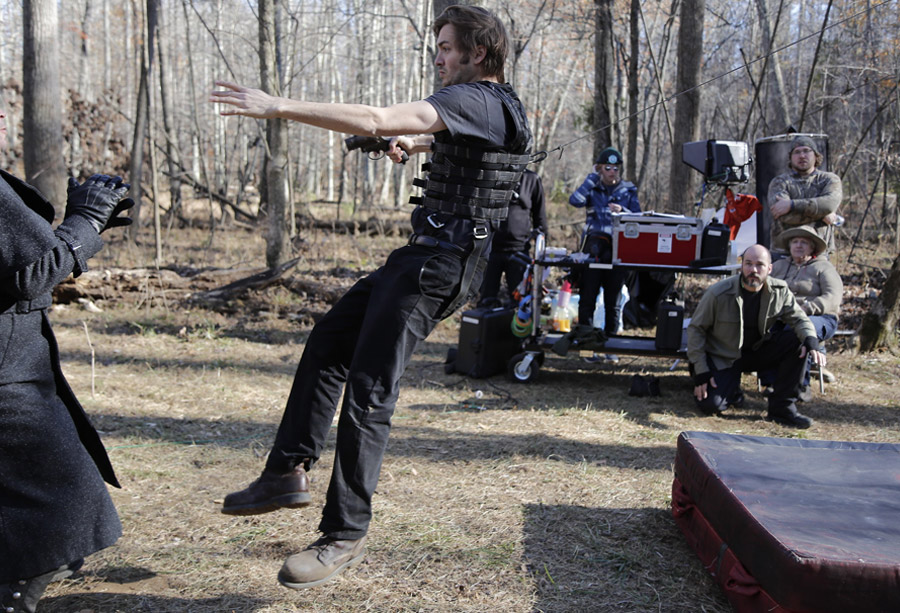
I’m sorry, Alex. Photo credit CJ Reaves.
Equipment: $1,425.19
Again. Lucky. My DP, the amazing Joe Tyler, has a crap-ton of gear that was all free. And, my friend John Grove (another very talented local cinematographer) threw some gear my way as well. That being said, we did rent some odds and ends from a local grip house: mainly big lights (1200W PAR HMIs), big reflectors, and generators to power things at the forest location.
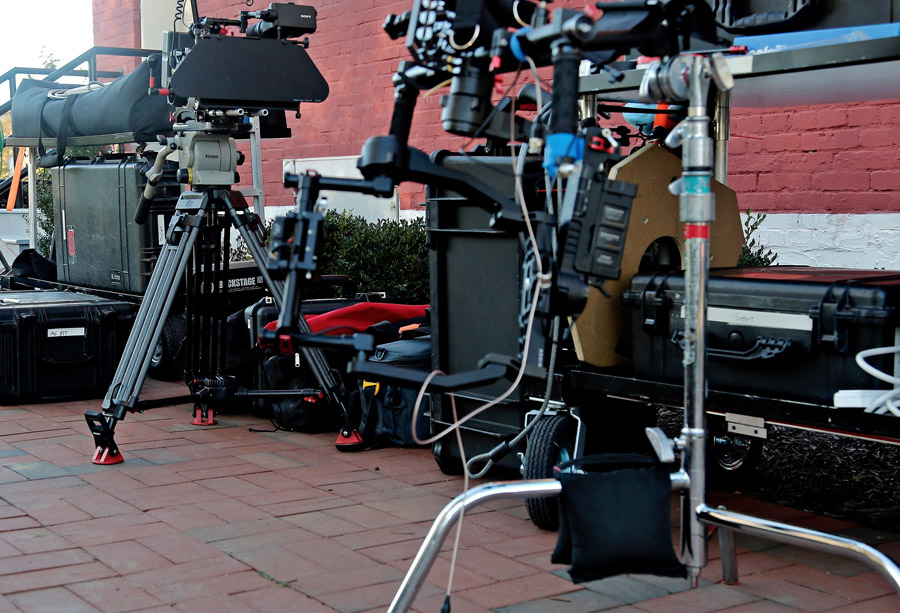
Equipment! Photo credit CJ Reaves.
Food: $1,389.33
As any indie filmmaker knows, if you can’t afford to pay a crew, at least make sure to feed them well. I hopefully delivered in that department. Karen Walker (whose property we shot on) did an AMAZING job feeding my cast and crew for two days out in the woods. She whipped up home-made, delicious, HOT food for breakfast and lunch each day. It was amazing. There was also tons of snacks and the like.
On the first day, I went the Costco route (platters, sandwiches, etc) and my in-laws were gracious enough to prepare and set it out for everyone.
For the last day in the lab/classroom, I cheated and ordered pizza. Yes, I realize this is somewhat of an indie film set faux pas. However, I think people were so excited to be finished with this project, that they didn’t seem to mind too much (or, at least they chose to make snide comments when I wasn’t in the room).
Finally, I rented a port-a-potty for the days out in the woods so people didn’t have to poop outdoors if they didn’t want to. I’m nice like that.
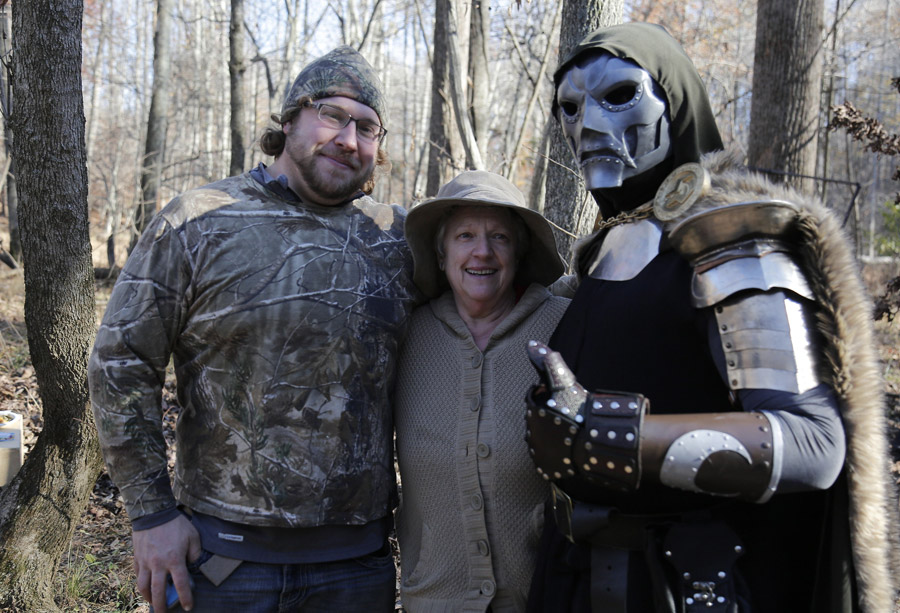
The lovely Karen Walker and her talented son, Joey, chilling with Doom. Photo Credit CJ Reaves.
Post Production: $2,500.00
I edited the film and did 90% of the VFX myself. My buddy Brian Cain, who is more talented than I am, helped out with a few shots for free.
Color was done gratis by my friend and writing-partner, Ben Watts.
All the money in the post production went to the audio. I paid both my sound designer and composer reduced rates. Again, I couldn’t afford to pay them what they were actually worth…but I wanted to give them something so they didn’t want to kill me. But, even so, this slowed me down. Audio post production took about 3x longer than I thought it would and pushed the release of the film by about a month. Lesson learned: budget more time for post—it will always take longer than you think.
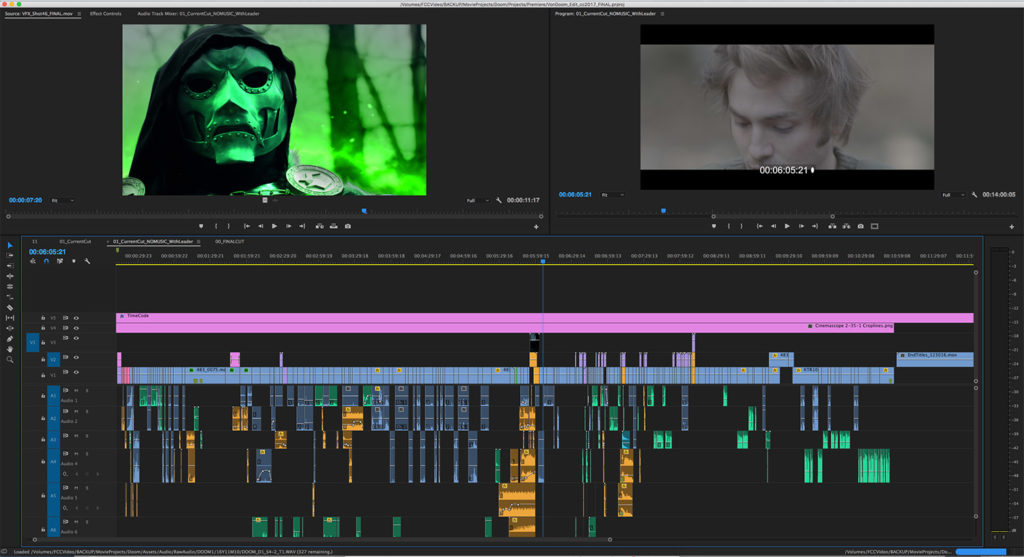
My Premiere timeline of the rough cut.
Miscellaneous Expenses: $1,042.77
This covers all the other random stuff I spent money on—from office supplies to gas money to hard drives for footage backup. The biggest line item I didn’t properly account for was the $400.00 I spent to rent a local movie theater on a Monday night to screen the film for the cast and crew. I technically didn’t need to do this, but heck, after I blew my $10K budget, I said “f-ck it!” and splurged. I offset some of the cost (i.e. around $50.00) by selling tickets to the general public. Cast and crew tickets were, of course, free.
But, what would it really have cost?
Okay, but now you’re probably thinking: “But, Ivan…this budget is unrealistic. Everyone worked for either dirt cheap or free. It’s not what it would really have cost! You’re a big fat liar!”
True enough. As I stated earlier, most indie filmmakers can make things on the cheap due to connections they have and the willingness of friends to come out. I can’t deny that. I just don’t like when filmmakers fail to acknowledge this gray area. I get it…not everyone has access to fancy cameras and nice lenses.
To provide some realistic perspective, I did a quick estimate of what the production “buckets” would have cost if everything was done “legit.” That means, people would have gotten normal day rates for what a production would cost in the DC-area for standard 10 hour days. Those numbers are below (to make things simpler, I rounded day rates to even figures).
- Locations: $365.76 (Same)
- Costumes and Production Design: $2161.51 (More or less the same…I’ve accounted for the production designer’s salary in crew costs below)
- Crew: $29,510.00 (oooh…boy! That’s a scary number. See it pays to have good friends!)
- Actors: $10,109.00 (assuming cast is paid something similar to a normal SAG-rate…none of this “new media” hootenanny.)
- Equipment: $2125.19 (slightly more as I’m accounting for an additional camera rental which my DP provided for free)
- Food: $1,389.33 (again…same.)
- Post Production: $15,000 (I’m spitballing a bit with this since I did the majority of the post production myself and didn’t really track my time like a normal work project. I worked random hours here and there. But, I think this is a good, conservative estimate).
Total (“LEGIT”) Budget: $60,660.79
Again, the goal here is to be transparent. Few short films made today have “real” budgets. For the most part, It’s a medium that doesn’t make money, so few are willing to pay to make them like normal commercials and features. But, still, I think it’s important number to look at…at the very least to provide perspective. I’m not bragging that I made the movie for cheap and stiffed people. I’m just trying to show how most small, “for fun” productions come together in the real world and how much it would cost.
Final Thoughts:
So, now for the big question: was it worth it? That remains to be seen. I’m not going to make any money off Von Doom…at least not directly. But, I chalk up the cost it takes to make a film like this as the equivalent of a semester at the film school that I never went to (heck, it’s actually a bargain when you look at it like that). The only way for me to be a better director is to…well…direct things. With each film I make, I learn more and, hopefully, improve. So, purely in terms of creative growth, it was worth it.
I’m proud that I didn’t crowdsource the movie. Too often, crowd-sourcing campaigns are burdens on a filmmaker’s friends and family. I didn’t want to be that guy who annoyed you on Facebook every morning. Could I have potentially gotten a bigger budget? Sure. But, I feel like I’ll play the crowdsourcing hand when my audience is bigger and I’m more confident in my directorial skills. Plus, I didn’t have to annoy all my friends on social media for months on end—For just $10 dollars, you’ll get your name in the credits!!! HUGE BARGAIN!
To be blunt, Indie filmmaking is kind of thankless. As the technical aspects of production continue to get easier and easier, it’s also becoming harder and harder to stand out amongst the figurative flood of digital content being created. As I wrote a few years back, it’s the “screaming into the abyss” phenomenon. But, that doesn’t discourage me—this was never about getting a “big break.” Rather, it’s about learning, growing, and developing as a storyteller.
With this blog post, I wanted to show what an indie film production actually looks like—how much you need to beg, borrow, and steal to make it work—and even when doing that—how much cash you still have to fork out. I’m not rich. $11K was a big financial expenditure for me (my wife is incredibly supportive). But, as Tom Cruise famously said in Risky Business, sometimes you just gotta say “what the fuck…make your move.”
If you’re interested, you can check out all the behind the scenes photos here and here.
Until next time…happy shooting!

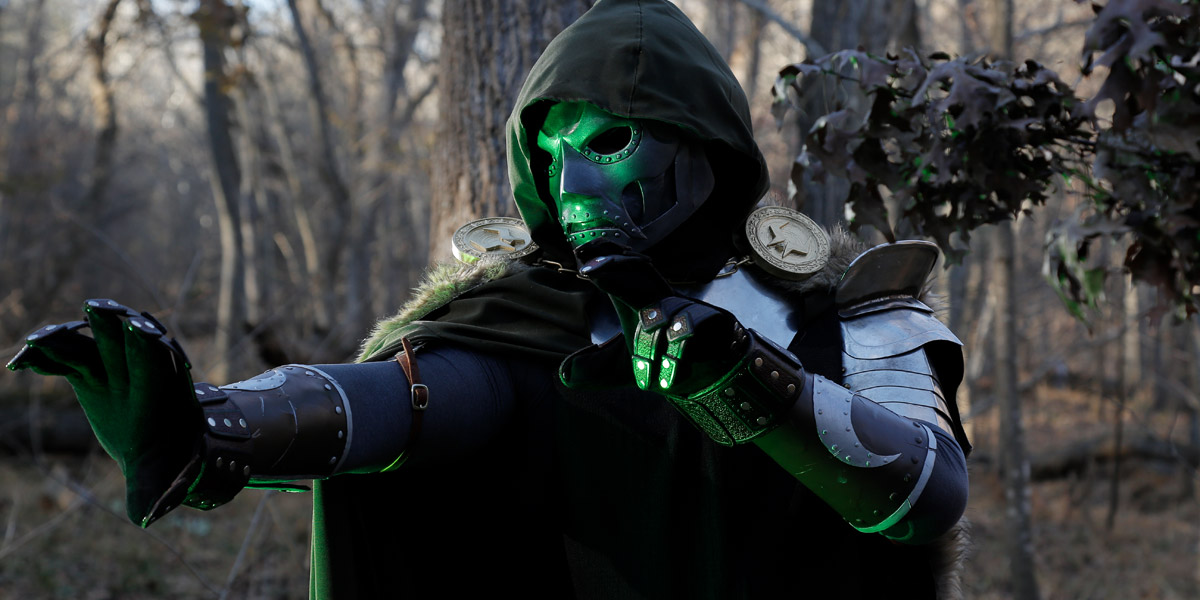
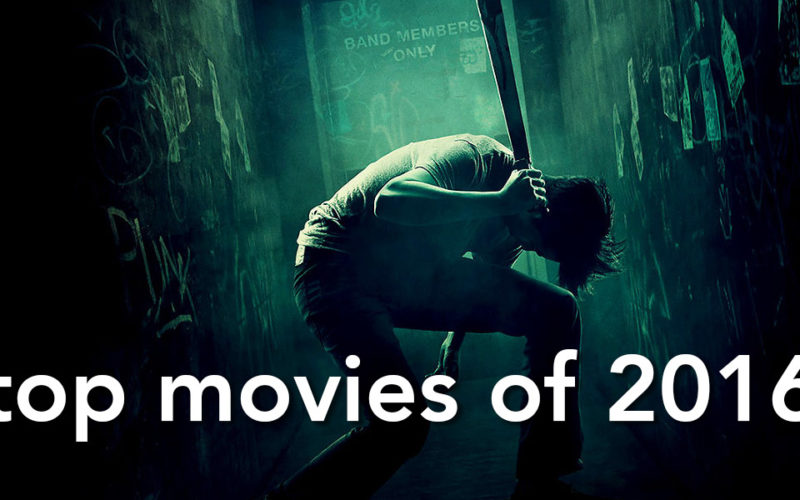

8 comment on “How I Made A Dr. Doom Movie for $11,000”